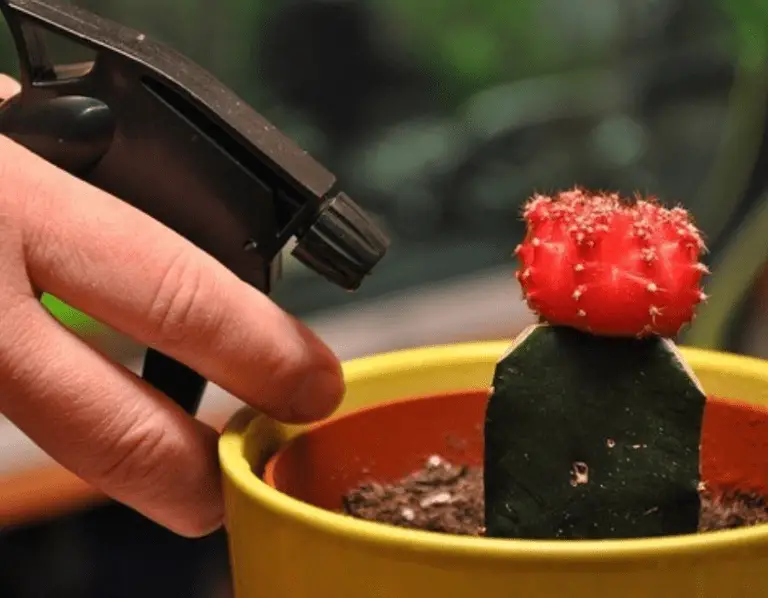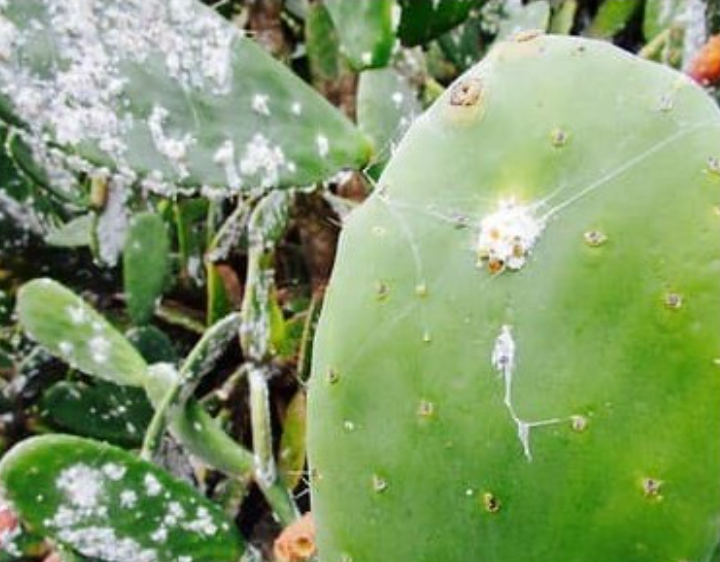Root Mealybugs: Identification and Control
Root mealybugs are small, soft-bodied white or grey insects that feed on the sap of plant roots. They are serious pests that can weaken or kill the plant. Since they dwell in the soil, they are difficult to detect and control.
However, signs of soil mealybugs include stunted plant growth, yellowing leaves, wilting, or a white, waxy material buildup on the roots. They also secrete a powdery, white substance that gives the soil a bluish tint.
In pots, the infestation of root mealybugs is noticeable only if the root ball is removed from the pot. However, N.C. Cooperative Extension explains that these bugs sometimes crawl out of the drainage holes and infest plants nearby.
Although root mealybugs are a problem in many houseplant plants, they are more common in African violets, cacti, and other succulents. They are likely getting it easy to pierce these plants’ roots to suck the sap.
Identification of Soil Mealybugs
Various tiny white bugs are found in the soil, but you can identify root mealybugs through their appearance. They are typically small, the size of a rice grain, and covered in a white cottony substance. This is where they lay their eggs and get protection from the elements.
Female mealybugs lay eggs throughout the soil but are more concentrated between the rootball and the pot. In 24 hours, the eggs hatch into live crawlers that are highly mobile. They seem more active when the plants are watered, and they can easily be washed out of the pot to the plants nearby.
The entire life cycle of mealybugs ranges from two to four months, depending on the species. Unfortunately, they are difficult to spot, especially when the potting mix contains perlite.

Root mealybugs vs foliage mealybugs
Both common mealybugs and root mealybugs are harmful pests that use their sharp mouthparts to pierce and suck fluids from plants. Here’s a table summarizing the differences between root mealybugs and foliage mealybugs:
| Roots mealybugs | Foliage mealybugs |
| They are found in the soil and on plant roots | They are found on the aboveground parts of plants, such as leaves, stems, and flowers. |
| Small, white, or grey, covered in a waxy, cottony coating | Covered in a white, waxy substance and may have pink or yellowish bodies. |
| They are known to weaken the plant by damaging the roots, and they can transmit plant viruses. | They damage the plant by sucking sap from the stems or leaves, and they produce honeydew, which can attract ants and promote sooty mold growth. |
| They are difficult to control using insecticides. Biological control agents such as beneficial nematodes can be helpful. | They can be managed using insecticides or physically removing them from the plant with a cotton swab dipped in rubbing alcohol. |
How to control root mealybugs
If you notice that your plant’s health is deteriorating and you suspect root mealybugs, you can gently remove it from the pot and inspect the roots for signs of infestation.
As I said, it can be difficult to control soil mealybugs due to their waxy coating and nature of hiding below the ground. Here are some steps to control root mealybugs:
- If you detect mealybugs on one of your plants, move them into isolation to prevent the infestation from spreading to other plants.
- Apply a recommended insecticide strictly as directed on the product label. Insecticidal soaps and horticultural oils like neem effectively kill eggs, nymphs, and young mealybugs but must be applied as a drench to the growing medium.
- If the infestation is severe or if you are unsure how to control it, consider consulting a professional pest control service for assistance.
- Some gardeners use beneficial nematodes or biological control agents to manage root mealybug populations.
- Repotting the plant into fresh soil can also help control root mealybugs, but you have to wash out the plant roots in warm water at 120°F (49°C) to scald the pests.
Remember that controlling root mealybugs requires persistence and patience. Regular monitoring and early detection are key to preventing severe infestations. Explains the University of Massachusetts Extension.
To prevent root mealybugs, maintain healthy soil conditions by avoiding overwatering and ensuring proper drainage. Additionally, do not overcrowd your plants, as it can encourage the mealybugs to move from one plant to another.
Before buying a plant, thoroughly inspect the plant for any signs of mealybugs or other pests, including scales, spider mites and aphids.
My name is Diane M Lewik, and I am the founder of this website. I am a degree holder in plant biology from the University of California – Berkeley. Over the years, I have cultivated a vast collection of succulents and I have learned a great deal about how to grow and care for these unique plants. Feel free to ask any questions in the comment section below.





